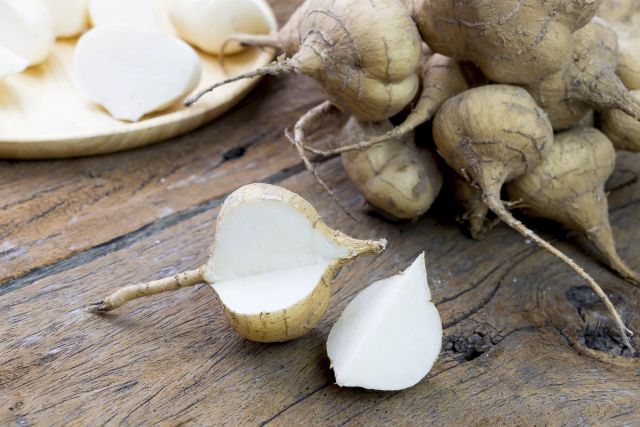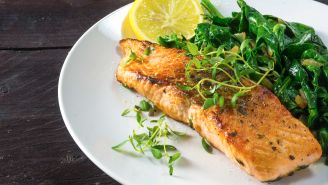Want a low-calorie, nonfat, nutritious veggie that may help control your appetite and blood sugar levels? Try jicama (pronounced HICK-a-ma).
Native to South America and often seen in Latin American markets, this tuber has been appearing increasingly in mainstream grocery stores. Also called Mexican turnip or yam bean, it tastes like a slightly sweet cross between a potato and a water chestnut.
Jicama is high in fiber—a nutrient that can help you feel full longer. One cup of raw jicama contains about 6 grams of fiber, about 21 percent of your daily recommended amount, according to the U.S. Department of Health and Human Services.
Fiber slows the absorption of nutrients from your digestive tract, which may help curb your appetite. High-fiber diets have been tied to many health benefits, including better weight control, better digestive health, less constipation, and lower levels of cholesterol and blood sugar.
Inulin and health
Jicama also naturally contains a prebiotic called inulin, which may explain its potential effects on appetite and blood sugar. Prebiotics are a type of plant fiber that your body can’t digest. But they’re important because they provide food for healthy bacteria in your gut and promote their growth. More healthy bacteria may translate into better digestive health and better health overall.
Inulin is added to some foods to give them a creamy texture. It’s used as a fat replacement in many low-fat foods you may find at the grocery store, such as frozen desserts, spreads, and some baked goods.
Studies in humans suggest that consuming inulin in your diet may decrease appetite and promote feelings of satiety. Inulin has also been associated with improved digestive health and insulin sensitivity, healthy cholesterol levels, and better absorption of calcium and magnesium.
So far, only a few studies have looked at the possible health effects of eating inulin found in jicama, and most of these have been in animals. One small study found that mice who ate a high-fat diet supplement with jicama fiber for eight weeks showed lower fasting blood sugar levels and better glucose tolerance than mice fed a high-fat diet without jicama. The jicama-fed mice also did not have pancreas changes typical of type 2 diabetes, suggesting that the jicama may have helped prevent the development of diabetes in this group of mice. The study was published in the Journal of Applied Pharmaceutical Sciences in 2021.
Good nutrition in a small package
Jicama can be a healthy choice in many ways. In addition to fiber, one cup contains:
- 50 calories
- 90 percent water
- Virtually no fat (0.117 grams)
- 2 grams of sugar, with a low glycemic index (which means the sugar is absorbed more slowly into your bloodstream, making blood sugar spikes less likely)
- 11.5 grams of carbohydrates
- Small amounts of potassium, calcium, magnesium, folate, vitamin A and vitamin C
How to get crunching
Jicama is usually eaten raw. As long as you don’t overdo it, jicama also keeps its crunch when cooked. You’ll often see it sold with a thick coating of wax over its thin brown skin (which isn’t edible).
Peel off both the skin and wax and enjoy jicama in place of or in addition to cabbage in coleslaw. It also works well cubed in a variety of salads. Try some of these ideas as inspiration for your own creations:
- Slice into sticks and sprinkle with lime juice and chili powder (the way it’s eaten in Mexico)
- Use it in your favorite stir-fry
- Add to tuna or egg salad (which lends a crunch similar to celery)
Substitute for shredded potatoes in hash browns







